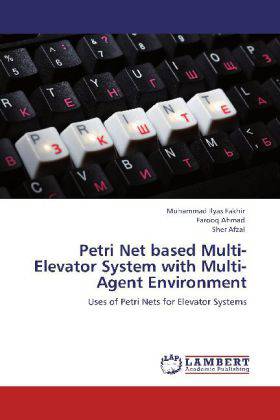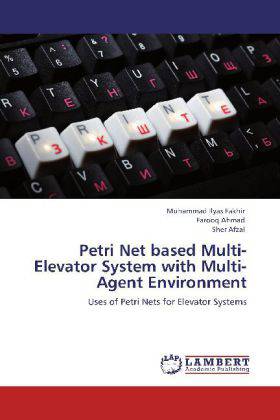
- Afhalen na 1 uur in een winkel met voorraad
- Gratis thuislevering in België vanaf € 30
- Ruim aanbod met 7 miljoen producten
- Afhalen na 1 uur in een winkel met voorraad
- Gratis thuislevering in België vanaf € 30
- Ruim aanbod met 7 miljoen producten
Zoeken
Petri Net based Multi-Elevator System with Multi-Agent Environment
Uses of Petri Nets for Elevator Systems
Muhammad Ilyas Fakhir, Farooq Ahmad, Sher Afzal
Paperback | Engels
€ 48,45
+ 96 punten
Omschrijving
I'm trying to build bridges between mathematics and practical subjects like information technology and engineering. A Petri nets (PNs) are a graphical and mathematical tool that are used for describing and studying information processing systems that are characterized as being concurrent, asynchronous, distributed, parallel, non-deterministic and/or stochastic. As a graphical tool, Petri nets can be used as a visual-communication aid similar to flow charts, block diagrams and networks. Tokens are used in these nets to simulate the dynamic and concurrent states of systems. As a mathematical tool, it is possible to set up state equations, algebraic equations and other mathematical models governing the behavior of systems. Since Petri nets are a formal methods' designing and modeling technique, so they are used to model complex systems as mathematical entities. By building a mathematically rigorous model of a complex system, it is possible to verify the system's properties in a more thorough fashion than empirical testing.
Specificaties
Betrokkenen
- Auteur(s):
- Uitgeverij:
Inhoud
- Aantal bladzijden:
- 100
- Taal:
- Engels
Eigenschappen
- Productcode (EAN):
- 9783848489442
- Verschijningsdatum:
- 18/06/2012
- Uitvoering:
- Paperback
- Formaat:
- Trade paperback (VS)
- Afmetingen:
- 152 mm x 229 mm
- Gewicht:
- 158 g

Alleen bij Standaard Boekhandel
+ 96 punten op je klantenkaart van Standaard Boekhandel
Beoordelingen
We publiceren alleen reviews die voldoen aan de voorwaarden voor reviews. Bekijk onze voorwaarden voor reviews.











